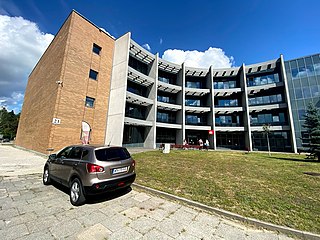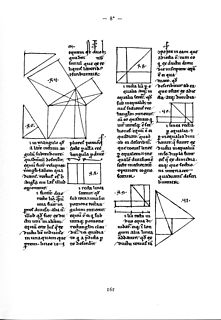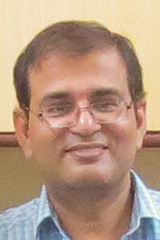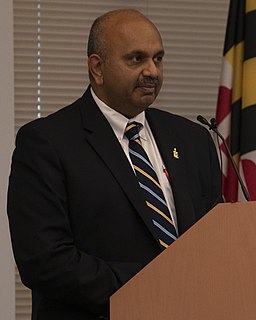Related Research Articles
Digital signal processing (DSP) is the use of digital processing, such as by computers or more specialized digital signal processors, to perform a wide variety of signal processing operations. The digital signals processed in this manner are a sequence of numbers that represent samples of a continuous variable in a domain such as time, space, or frequency. In digital electronics, a digital signal is represented as a pulse train, which is typically generated by the switching of a transistor.
A diagram is a symbolic representation of information using visualization techniques. Diagrams have been used since prehistoric times on walls of caves, but became more prevalent during the Enlightenment. Sometimes, the technique uses a three-dimensional visualization which is then projected onto a two-dimensional surface. The word graph is sometimes used as a synonym for diagram.

Visualization or visualisation is any technique for creating images, diagrams, or animations to communicate a message. Visualization through visual imagery has been an effective way to communicate both abstract and concrete ideas since the dawn of humanity. Examples from history include cave paintings, Egyptian hieroglyphs, Greek geometry, and Leonardo da Vinci's revolutionary methods of technical drawing for engineering and scientific purposes.

The Polish Academy of Sciences is a Polish state-sponsored institution of higher learning. Headquartered in Warsaw, it is responsible for spearheading the development of science across the country by a society of distinguished scholars and a network of research institutes. It was established in 1951, during the early period of the Polish People's Republic following World War II.

Cardinal Stefan Wyszyński University in Warsaw (UKSW) is a Polish state university created on the basis of the Academy of Catholic Theology in Warsaw. UKSW is a public university that offers education in various fields of study: from humanities and social studies to exact and natural sciences, and since 2019 also medicine.

Thomas Shi-Tao Huang was a Chinese-born American computer scientist, electrical engineer, and writer. He was a researcher and professor emeritus at the University of Illinois at Urbana-Champaign (UIUC). Huang was one of the leading figures in computer vision, pattern recognition and human computer interaction.
The following are common definitions related to the machine vision field.

Diagrammatic reasoning is reasoning by means of visual representations. The study of diagrammatic reasoning is about the understanding of concepts and ideas, visualized with the use of diagrams and imagery instead of by linguistic or algebraic means.

Jaime Guillermo Carbonell was a computer scientist who made seminal contributions to the development of natural language processing tools and technologies. His extensive research in machine translation resulted in the development of several state-of-the-art language translation and artificial intelligence systems. He earned his B.S. degrees in Physics and in Mathematics from MIT in 1975 and did his Ph.D. under Dr. Roger Schank at Yale University in 1979. He joined Carnegie Mellon University as an assistant professor of computer science in 1979 and lived in Pittsburgh from then. He was affiliated with the Language Technologies Institute, Computer Science Department, Machine Learning Department, and Computational Biology Department at Carnegie Mellon.

Pyramid, or pyramid representation, is a type of multi-scale signal representation developed by the computer vision, image processing and signal processing communities, in which a signal or an image is subject to repeated smoothing and subsampling. Pyramid representation is a predecessor to scale-space representation and multiresolution analysis.

Lawrence Jay Rosenblum is an American mathematician, and Program Director for Graphics and Visualization at the National Science Foundation.

Computer graphics is a sub-field of computer science which studies methods for digitally synthesizing and manipulating visual content. Although the term often refers to the study of three-dimensional computer graphics, it also encompasses two-dimensional graphics and image processing. The individuals who serve as professional designers for computers graphics are known as "Graphics Programmers", who often are computer programmers with skills in computer graphics design.

Computer graphics deals with generating images with the aid of computers. Today, computer graphics is a core technology in digital photography, film, video games, cell phone and computer displays, and many specialized applications. A great deal of specialized hardware and software has been developed, with the displays of most devices being driven by computer graphics hardware. It is a vast and recently developed area of computer science. The phrase was coined in 1960 by computer graphics researchers Verne Hudson and William Fetter of Boeing. It is often abbreviated as CG, or typically in the context of film as computer generated imagery (CGI). The non-artistic aspects of computer graphics are the subject of computer science research.

Mathematical diagrams, such as charts and graphs, are mainly designed to convey mathematical relationships—for example, comparisons over time.

Demetri Terzopoulos is an Academy Award winning Greek-Canadian-American computer scientist, university professor, author, and entrepreneur. He is best known for pioneering the physics-based approach to computer graphics and vision that has helped unify these two fields, and for introducing Deformable Models, among them the seminal Active contour models, to graphics, vision, medical imaging, and other domains; he is also known for his artificial life research on realistic animal and human modeling and simulation, encompassing musculoskeletal biomechanics, neuromuscular and neuro-sensorimotor control, and artificial intelligence. He is currently a Distinguished professor and Chancellor's Professor of Computer Science in the Henry Samueli School of Engineering and Applied Science at the University of California, Los Angeles, where he directs the UCLA Computer Graphics & Vision Laboratory.
Ryszard S. Michalski was a Polish-American computer scientist. Michalski was Professor at George Mason University and a pioneer in the field of machine learning.

Subhasis Chaudhuri is an Indian electrical engineer and the director at the Indian Institute of Technology, Bombay. He is a former K. N. Bajaj Chair Professor of the Department of Electrical Engineering of IIT Bombay. He is known for his pioneering studies on computer vision and is an elected fellow of all the three major Indian science academies viz. the National Academy of Sciences, India, Indian Academy of Sciences, and Indian National Science Academy. He is also a fellow of Institute of Electrical and Electronics Engineers, and the Indian National Academy of Engineering. The Council of Scientific and Industrial Research, the apex agency of the Government of India for scientific research, awarded him the Shanti Swarup Bhatnagar Prize for Science and Technology, one of the highest Indian science awards, in 2004 for his contributions to Engineering Sciences.

The history of Polish computing (informatics) began during the Second World War with breaking the Enigma machine code by Polish mathematicians. After World War II, work on Polish computers began. Poles made a significant contribution to both the theory and technique of world computing.

Amitabh Varshney is an Indian-born American computer scientist. He is an IEEE fellow, and serves as Dean of the University of Maryland College of Computer, Mathematical, and Natural Sciences. Before being named Dean, Varshney was the director of the University of Maryland Institute for Advanced Computer Studies (UMIACS) from 2010 to 2018.
References
- ↑ Bredeweg, Bert, and Kenneth D. Forbus. "Qualitative modeling in education." AI magazine 24.4 (2003): 35.
- ↑ Latecki, Longin Jan. Discrete representation of spatial objects in computer vision. Vol. 11. Springer Science & Business Media, 1998.
- ↑ Zenon Kulpa: Professional Biography, last updated 2009. Accessed at archive.org. 04.2015.
- ↑ Zenon Kulpa at DBLP Bibliography Server